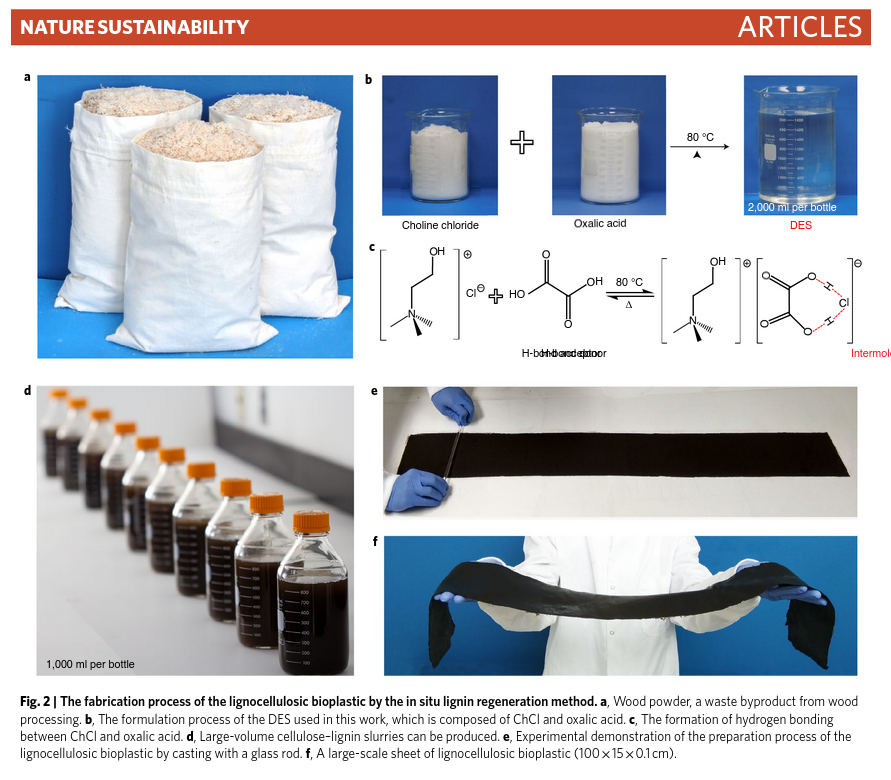Turning Wood Into Plastic

Renewable and biodegradable materials]] derived from biomass are attractive candidates to replace non-biodegradable petrochemical plastics. However, the mechanical performance and wet stability of biomass are generally insufficient for practical applications. Herein, we report a facile in situ lignin regeneration strategy to synthesize a high-performance bioplastic from lignocellulosic resources (for example, wood). In this process, the porous matrix of natural wood is deconstructed to form a homogeneous cellulose–lignin slurry that features nanoscale entanglement and hydrogen bonding between the regenerated lignin and cellulose micro/nanofibrils. The resulting lignocellulosic bioplastic shows high mechanical strength, excellent water stability, ultraviolet-light resistance and improved thermal stability. Furthermore, the lignocellulosic bioplastic has a lower environmental impact as it can be easily recycled or safely biodegraded in the natural environment. This in situ lignin regeneration strategy involving only green and recyclable chemicals provides a promising route to producing strong, biodegradable and sustainable lignocellulosic bioplastic as a promising alternative to petrochemical plastics.
Criado/Created: 03-04-2021 [15:38]
Última actualização/Last updated: 09-10-2023 [15:52]

(c) Tiago Charters de Azevedo